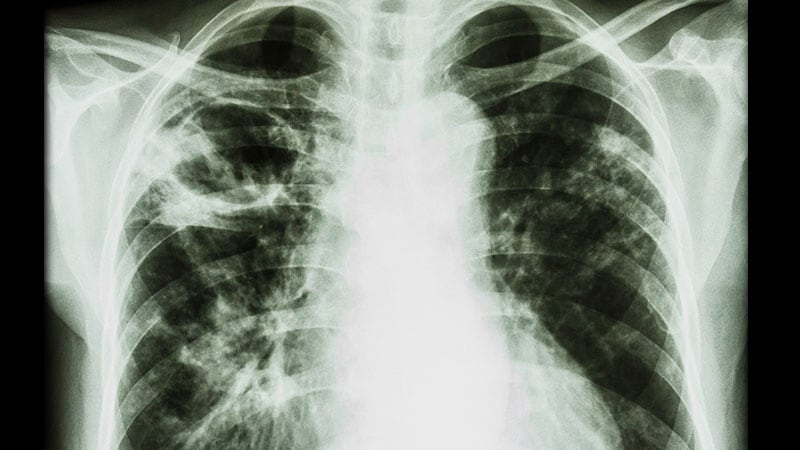AI Detects Tuberculosis from Chest X-rays with Comparable Accuracy to Radiologists
Core Concepts
AI software can detect tuberculosis from chest x-rays with accuracy comparable to radiologists, aiding in low-resource areas.
Abstract
AI software can detect TB from chest x-rays with high accuracy.
Useful in low-resource areas where TB is concentrated.
AI software (qXR, Qure.ai) compared to Ethiopian radiologists.
AI software trained on mobile phone photos of nondigital chest x-rays.
AI software showed sensitivity of 75% and specificity of 85.7%.
AI performed better on some TB indications than radiologists.
WHO recommends computer-aided detection for TB screening.
Implementation depends on equipment availability and internet stability.
AI Promising in Detecting TB From Chest X-rays
Stats
TB causes 1.6 million deaths annually globally.
3 million undiagnosed TB patients in 2021.
AI software sensitivity of 75% and specificity of 85.7%.
Less experienced radiologist sensitivity of 62.5% and specificity of 91.7%.
More experienced radiologist sensitivity of 75% and specificity of 82%.
Quotes
"It's useful where you don't have radiologists, but it also might be useful in settings where you don't have experienced radiologists to support their decision-making." - Rudolf
Key Insights Distilled From
by Marcia Frell... at www.medscape.com 04-20-2023
https://www.medscape.com/viewarticle/991011
Deeper Inquiries
How can the implementation of AI in TB detection be improved?
To enhance the implementation of AI in TB detection, several steps can be taken. Firstly, increasing the diversity and volume of data used to train AI algorithms can improve their accuracy and generalizability. Collaborating with healthcare facilities globally to gather a wide range of chest x-ray images can help in this regard. Additionally, refining the AI algorithms through continuous learning and feedback loops can improve their performance over time. Moreover, ensuring that the AI systems are user-friendly and easily integrated into existing healthcare workflows can facilitate their adoption by healthcare providers. Lastly, conducting rigorous validation studies in diverse populations and settings can help build trust in the AI technology for TB detection.
What are the potential drawbacks of relying solely on AI for medical diagnoses?
While AI shows promise in medical diagnoses, there are potential drawbacks to relying solely on this technology. One major concern is the lack of human oversight and interpretation, which can lead to errors or misdiagnoses that may have serious consequences for patients. AI systems may also struggle with rare or complex cases that require nuanced clinical judgment, which human healthcare providers are better equipped to handle. Additionally, the black-box nature of some AI algorithms can make it challenging to understand the reasoning behind their decisions, raising ethical and transparency issues. Moreover, the initial cost of implementing AI systems and the need for ongoing maintenance and updates can be barriers for healthcare facilities, especially in resource-limited settings.
How can advancements in AI technology impact healthcare in developing countries?
Advancements in AI technology have the potential to significantly impact healthcare in developing countries in several ways. Firstly, AI can help address the shortage of healthcare professionals by providing decision support tools for diagnosing and managing diseases like TB, especially in areas with limited access to trained radiologists. This can improve the efficiency and accuracy of diagnoses, leading to better patient outcomes. Additionally, AI can enable telemedicine and remote consultations, allowing healthcare providers in underserved areas to access expert opinions and guidance. Furthermore, AI-powered predictive analytics can help in disease surveillance, resource allocation, and outbreak detection, enhancing public health efforts in developing countries. Overall, advancements in AI technology can help bridge the healthcare gap between developed and developing nations, improving access to quality care and reducing healthcare disparities.
0
